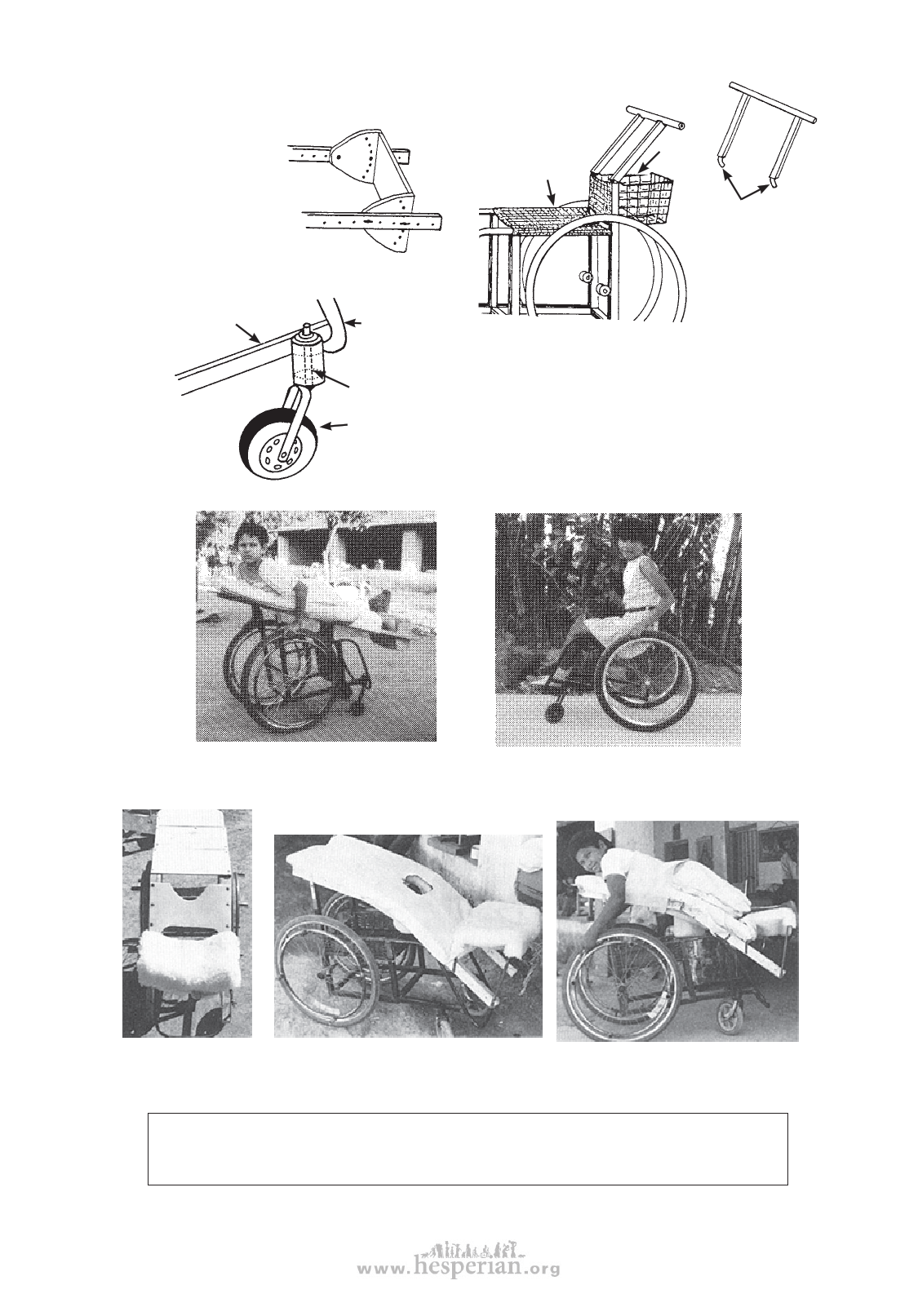
FOOTREST
DESIGNS FOR 6 BASIC WHEELCHAIRS 619
REMOVABLE HANDLE
Use thin wood or
plywood. (Pad sides
and bottom well
to prevent sores.
Examine feet daily.)
FRONT CASTER WHEEL
3/4” square
tubing
cloth or woven
plastic seat
and back
book
basket
pieces that
fit into
side tubes
1/2” round
tubing
5/8” bolt
‘shopping cart’
wheel with holes
drilled for
lighter weight
You should now have enough information
to make a wheelchair with a lying board
without step-by-step instructions. Adapt
it, and make it the size to fit the child that
needs it.
Wheelchair with lying board. A wide
strap holds the child in place (but
take care it does not press on sores).
Wheelchair without lying board.
A variation of the wheelchair with lying board (p. 618) adapted for a paraplegic child with both contractures
and pressure sores of his hips and knees. Urine is collected in a plastic container. The wheelchair seat has
been converted into a basket.
CAUTION: Remember that a child who has some pressure sores can easily get new ones.
Be sure the child lies and sits so that there is little or no pressure over bony places. Examine
her whole body at least once a day and try to keep her dry.
disabled village children